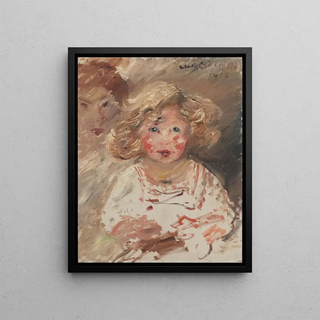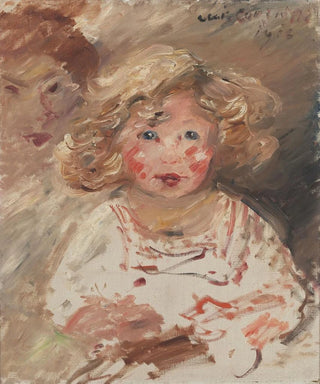Art print | Erika - Lovis Corinth


View from behind

Frame (optional)
Lovis Corinth's artwork "Erika" is a masterpiece that captures the very essence of art at the end of the 19th century. In this canvas, the artist manages to depict not only the beauty of his model but also an atmosphere imbued with sensuality and melancholy. The intensity of the colors and the mastery of light play invite the viewer to immerse themselves in a universe where time seems suspended. The depiction of Erika, both intimate and universal, resonates with an emotional depth that transcends eras. This piece, emblematic of the transitional period between realism and impressionism, testifies to Corinth's undeniable talent and his innovative approach to painting.
Style and uniqueness of the artwork
Lovis Corinth's style is distinguished by its boldness and ability to blend tradition and modernity. In "Erika," the artist employs expressive brushstrokes that breathe vibrant life into the canvas. The colors, rich and nuanced, blend harmoniously to create an atmosphere that is both warm and haunting. The blurred background emphasizes the presence of the model, highlighting the delicacy of her features and the depth of her gaze. This stylistic choice, reminiscent of early impressionist experiments, gives the piece a unique dynamism, where every detail seems to tell a story. Erika's pose, both natural and posed, reinforces this sense of intimacy, inviting the viewer to explore the emotions emanating from her face.
The artist and his influence
Lovis Corinth, born in 1858, established himself as one of the major figures of German art. His career, rich in artistic explorations, led him to experiment with various movements, from realism to symbolism, including impressionism. Corinth was influenced by masters such as Rembrandt and Van Gogh, but he developed a style that is uniquely his own, characterized by intense expressiveness and a bold approach to color. His artwork "Erika" perfectly illustrates this quest for novelty and emotion, while fitting into a rapidly changing artistic context.

Matte finish

View from behind

Frame (optional)
Lovis Corinth's artwork "Erika" is a masterpiece that captures the very essence of art at the end of the 19th century. In this canvas, the artist manages to depict not only the beauty of his model but also an atmosphere imbued with sensuality and melancholy. The intensity of the colors and the mastery of light play invite the viewer to immerse themselves in a universe where time seems suspended. The depiction of Erika, both intimate and universal, resonates with an emotional depth that transcends eras. This piece, emblematic of the transitional period between realism and impressionism, testifies to Corinth's undeniable talent and his innovative approach to painting.
Style and uniqueness of the artwork
Lovis Corinth's style is distinguished by its boldness and ability to blend tradition and modernity. In "Erika," the artist employs expressive brushstrokes that breathe vibrant life into the canvas. The colors, rich and nuanced, blend harmoniously to create an atmosphere that is both warm and haunting. The blurred background emphasizes the presence of the model, highlighting the delicacy of her features and the depth of her gaze. This stylistic choice, reminiscent of early impressionist experiments, gives the piece a unique dynamism, where every detail seems to tell a story. Erika's pose, both natural and posed, reinforces this sense of intimacy, inviting the viewer to explore the emotions emanating from her face.
The artist and his influence
Lovis Corinth, born in 1858, established himself as one of the major figures of German art. His career, rich in artistic explorations, led him to experiment with various movements, from realism to symbolism, including impressionism. Corinth was influenced by masters such as Rembrandt and Van Gogh, but he developed a style that is uniquely his own, characterized by intense expressiveness and a bold approach to color. His artwork "Erika" perfectly illustrates this quest for novelty and emotion, while fitting into a rapidly changing artistic context.






